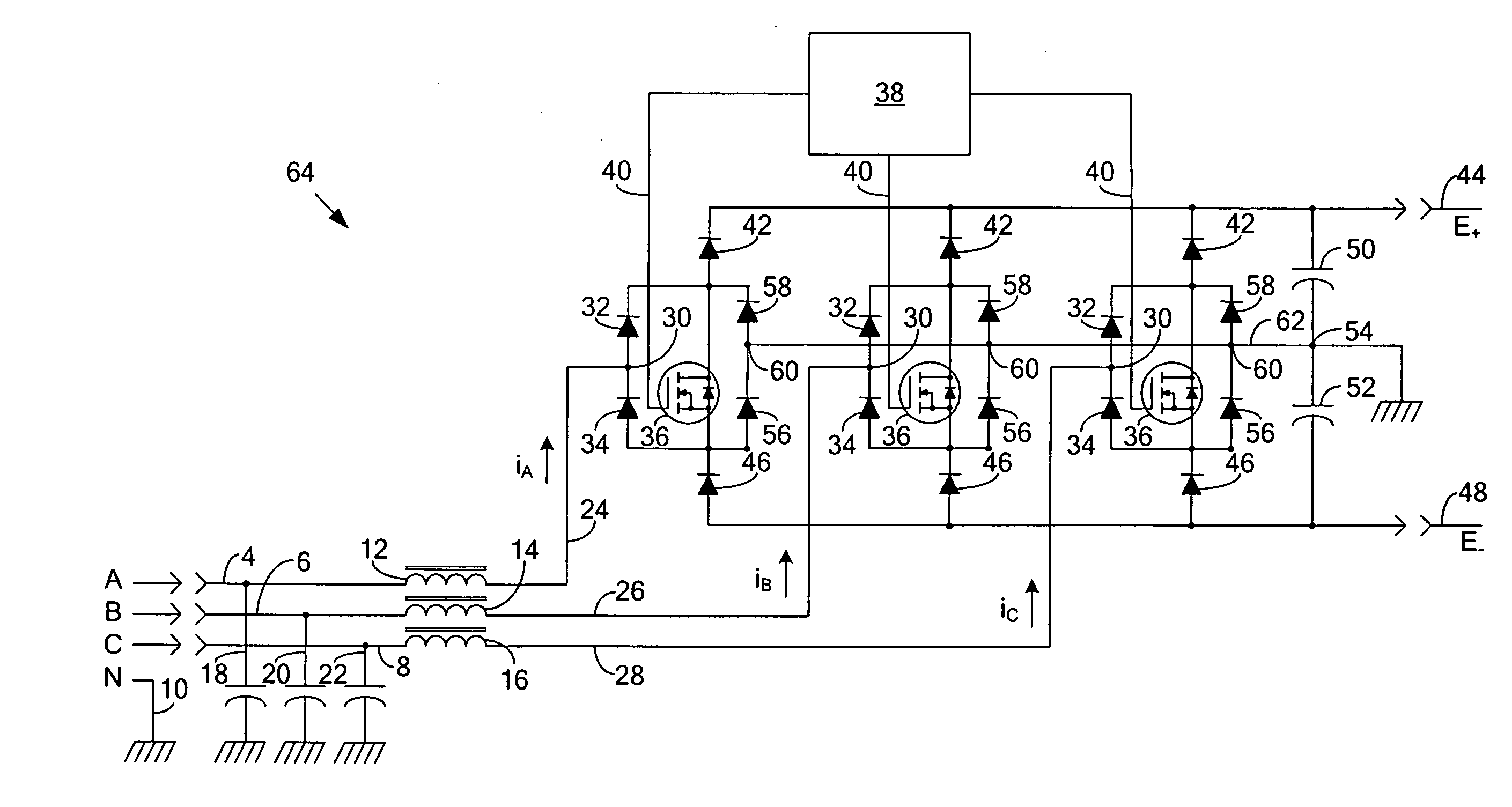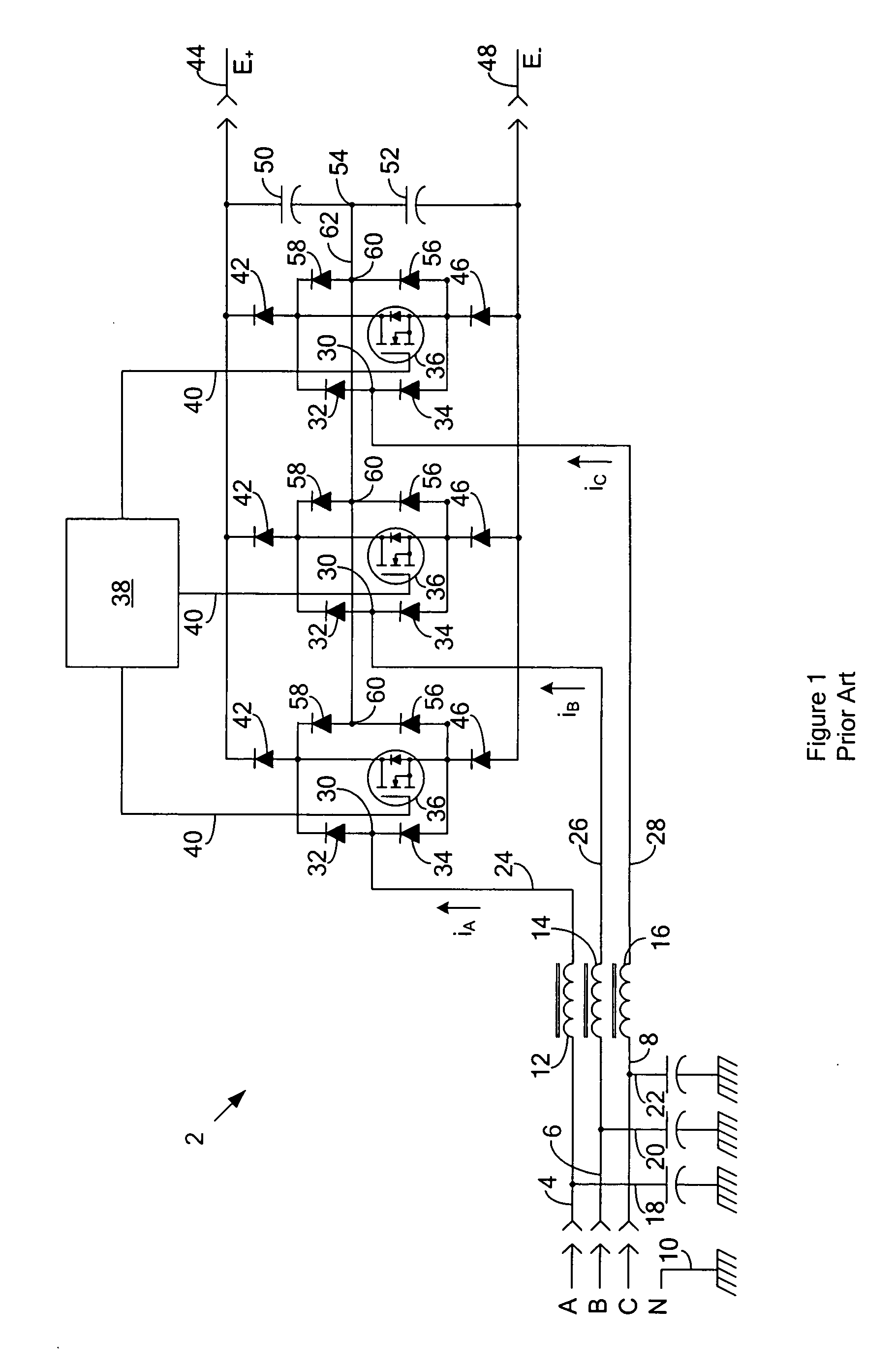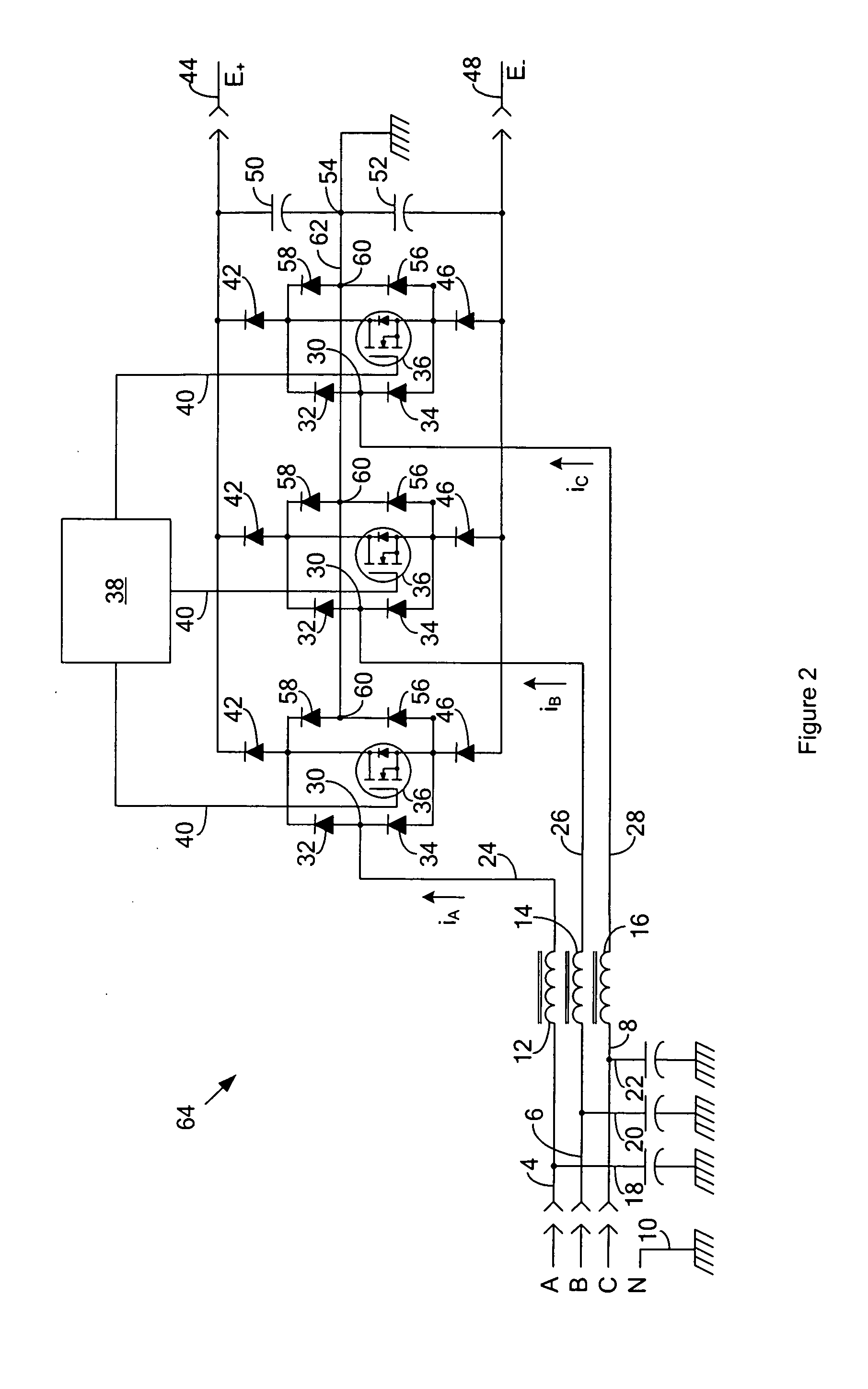Active rectifier system with power factor correction
a technology of active rectifier and power factor, which is applied in the direction of power conversion system, climate sustainability, efficient power electronics conversion, etc., can solve the problems of large harmonic distortion of low power factor of passive rectifier system, and relatively high distortion when coupled to reactive and nonlinear loads, so as to reduce harmonic distortion. the effect of significant reduction
- Summary
- Abstract
- Description
- Claims
- Application Information
AI Technical Summary
Benefits of technology
Problems solved by technology
Method used
Image
Examples
Embodiment Construction
[0011]FIG. 1 is a schematic diagram of a prior art active rectifier system 2 of the Vienna rectifier type. A polyphase AC power source (not shown) typically supplies AC power in three phases A, B and C represented by terminals A, B and C that has a fundamental AC power frequency, typically 400 to 800 Hz, by way of AC input lines 4, 6 and 8. The neutral point of the AC power source represented by terminal N couples to AC system ground by way of AC system ground line 10.
[0012]As common with rectifier systems of the switching type, the AC input lines 4, 6 and 8 feed AC current through inputs of inductors 12, 14 and 16 for phases A, B and C, respectively. The rectifier system may include capacitors 18, 20 and 22 coupled between outputs of each of the inductors 12, 14 and 16 and the AC system ground to attenuate high frequency harmonics of the AC power fundamental frequency that the Vienna type rectifier system 2 generates.
[0013]Current from the output of each of the inductors 12, 14 and...
PUM
 Login to View More
Login to View More Abstract
Description
Claims
Application Information
 Login to View More
Login to View More - R&D
- Intellectual Property
- Life Sciences
- Materials
- Tech Scout
- Unparalleled Data Quality
- Higher Quality Content
- 60% Fewer Hallucinations
Browse by: Latest US Patents, China's latest patents, Technical Efficacy Thesaurus, Application Domain, Technology Topic, Popular Technical Reports.
© 2025 PatSnap. All rights reserved.Legal|Privacy policy|Modern Slavery Act Transparency Statement|Sitemap|About US| Contact US: help@patsnap.com



